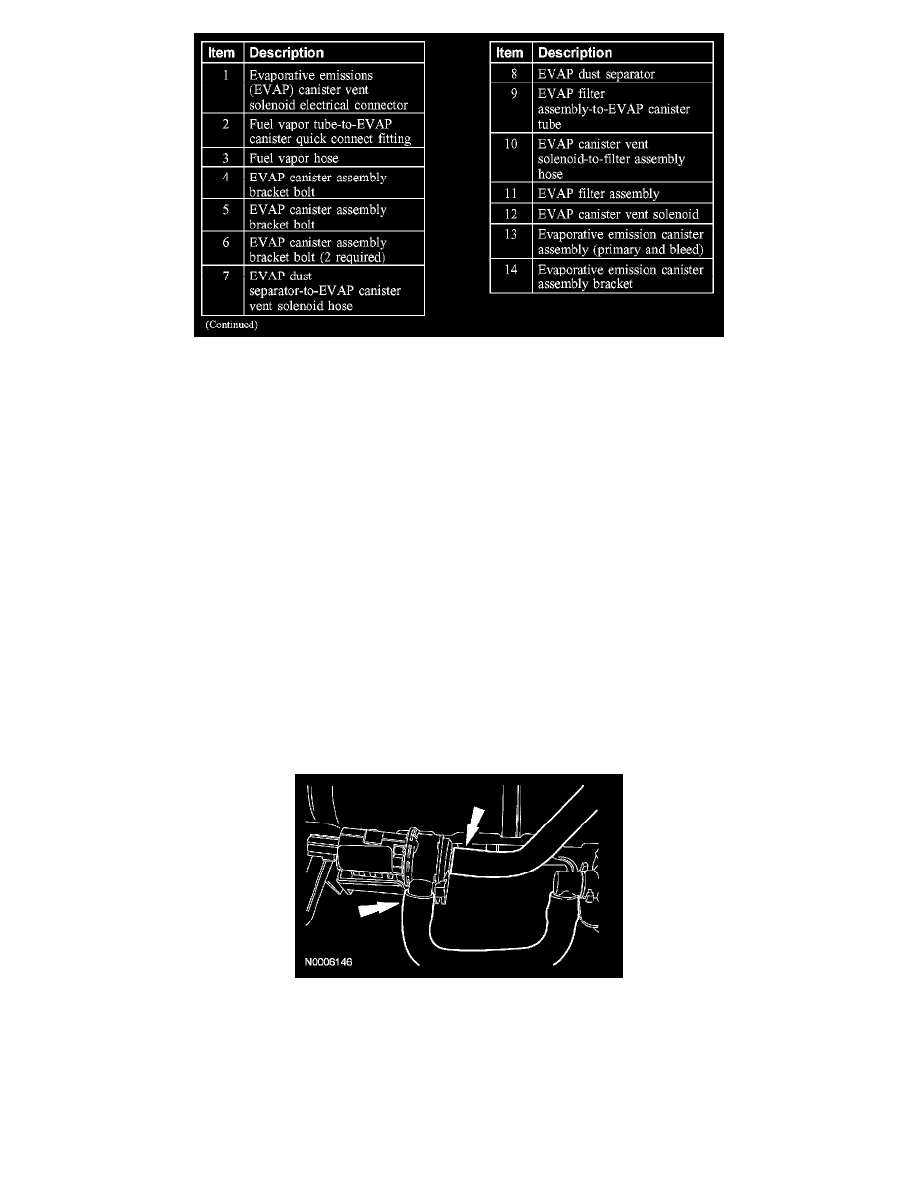Expedition 4WD V8-5.4L SOHC VIN 5 (2005)

Part 2
Exploded View
Removal and Installation
WARNING:
-
The evaporative emissions system contains fuel vapor and condensed fuel vapor. Although not present in large quantities, it still presents
the danger of explosion or fire. Disconnect the battery ground cable from the battery to minimize the possibility of an electrical spark
occurring, possibly causing a fire or explosion if fuel vapor or liquid fuel are present in the area. Failure to follow these instructions can
result in personal injury.
-
Do not smoke or carry lighted tobacco or open flame of any type when working on or near any fuel related component. Highly flammable
mixtures are always present and may be ignited. Failure to follow these instructions may result in personal injury.
1. With the vehicle in NEUTRAL, position it on a hoist.
2. Disconnect the battery ground cable.
3. Remove the spare tire.
4. Disconnect the evaporative emissions (EVAP) canister vent solenoid electrical connector.
5. Disconnect the fuel vapor tube from the EVAP canister.
6. Disconnect the fuel vapor vent tube from the dust separator.
7. Remove the 4 bolts and the EVAP canister assembly.
-
To install, tighten to 13 Nm (10 lb-ft).
8. Place the EVAP canister bracket assembly on a clean work surface.
9. Disconnect the hoses and remove the EVAP canister vent solenoid from the EVAP canister bracket.
10. To install, reverse the removal procedure.
-
Carry out the evaporative emission system leak test. See: Testing and Inspection/Evaporative Emission System Leak Test
-
Carry out the evaporative emissions repair verification drive cycle. See: Testing and Inspection/Evaporative Emission Repair Verification
Drive Cycle
